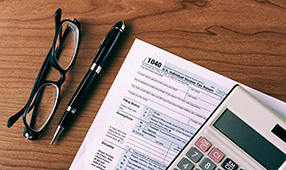Key takeaways
- Your state pension may not provide all the monthly income you’ll need for a long retirement.
- Supplement your pension by saving your own money in a retirement plan like a 403(b) or IRA.
- Invest for as many years as possible to maximize potential investment returns.
- Take advantage of the many NEA resources to help you save and invest for a secure retirement.
“So, Amy, how confident are you that you’ll have enough money for retirement?” Ted and Amy, teachers with almost 15 years of experience, were chatting in the teacher’s lounge. “Well, there’s my pension, and I’ve been saving on my own for the past 10 years, so I’m pretty confident,” Amy replied. “I think I need to ramp up my savings,” Ted mused. “At the moment, I’m not quite sure I’ll be able to live the retirement I want.”
According to the 2018 Retirement Confidence Survey1 conducted by the Employee Benefit Research Institute (EBRI), 64% of American workers say they are very or at least somewhat confident about having enough money for a comfortable retirement. But that’s all workers in general. Retirement planning for educators may have a few more moving parts compared to the average employee with a workplace 401(k) plan.
If you’re counting on your teacher’s pension to fully support you throughout a long retirement, you may want to rethink your strategy. Many state public employee pensions are facing serious funding issues. And if you’ve worked in school districts across different states, your eligibility for pension benefits may get a lot more complicated and, depending on when you leave the field, could end up being less than what you’ll need.
Social Security is another benefit that’s often misunderstood. For those eligible for full Social Security benefits, payments may replace only about 30% to 40% of pre-retirement income. Many educators may get less than that due to the Windfall Elimination Provision. More than a million teachers—about 40% of the workforce—are not covered under Social Security at all.
Boost your retirement confidence by saving your own money
With pension guarantees potentially on shaky ground, the need to save your own money is more important than ever. There are three basic factors driving the need to save:
- Income replacement. You may need to replace virtually all of your pre-retirement income once the paychecks stop. If pensions and Social Security fall short of your income needs, the rest will have to come from personal savings, earned income, or both.
- A long life. If you stay healthy, you could spend 20 to 30 years in retirement. Maybe more if you retire in your fifties. A healthy retirement savings account can keep you from running out of money when you may need it the most.
- Rising expenses. Between inflation and rising healthcare expenses, you may need more money later in your retirement than you do at the beginning. Again, a nice personal savings reserve could make the difference between feeling secure and feeling sorry.
Make your savings count
One good thing about saving your own money is that you have a lot of control over when you start saving, how much you save and how you invest those dollars for potential growth. Here are the three primary factors that affect how much money you accumulate in your retirement plans:
- Time. Financial markets go up and down in value over time. But historically, over longer time frames of 20 years or more, markets have risen in value. The longer your money stays invested, the greater opportunity you have to see some of this long-term growth potential in your account. Start saving as early as possible in your career to maximize this time value.
- Contributions. You have direct control over how much money you put into your retirement plans. The more you contribute, the more opportunity your account has to grow, even during periods of lower investment performance. Try to gradually increase your retirement plan contributions over time as your income goes up.
- Investment returns. Obviously, higher returns are better, but higher return potential also means greater risk. By picking a diversified investment mix that aligns with your time horizon and risk tolerance, you can help manage that delicate balance between risk and return. Educate yourself so you can make informed investment decisions that won’t keep you up at night.
Create a savings plan and stick with it
Here are a few more steps you can take to help get your retirement confidence up to Amy’s level:
- Get a 5-minute retirement checkup to see where your retirement income security stands right now.
- Find a representative in your area who can offer financial guidance and discuss savings opportunities
- Check out the NEA Retirement Program which offers products to help you save for retirement throughout different stages of your life. You can work with an NEA Retirement Specialist or do it yourself.
- See if your district offers a 403(b) plan to help supplement pension and Social Security benefits.
1 Source: 2018 Retirement Confidence Survey, Employee Benefit Research Institute (EBRI) and Greenwald & Associates.
Deposit products offered by Discover Bank, Member FDIC.











